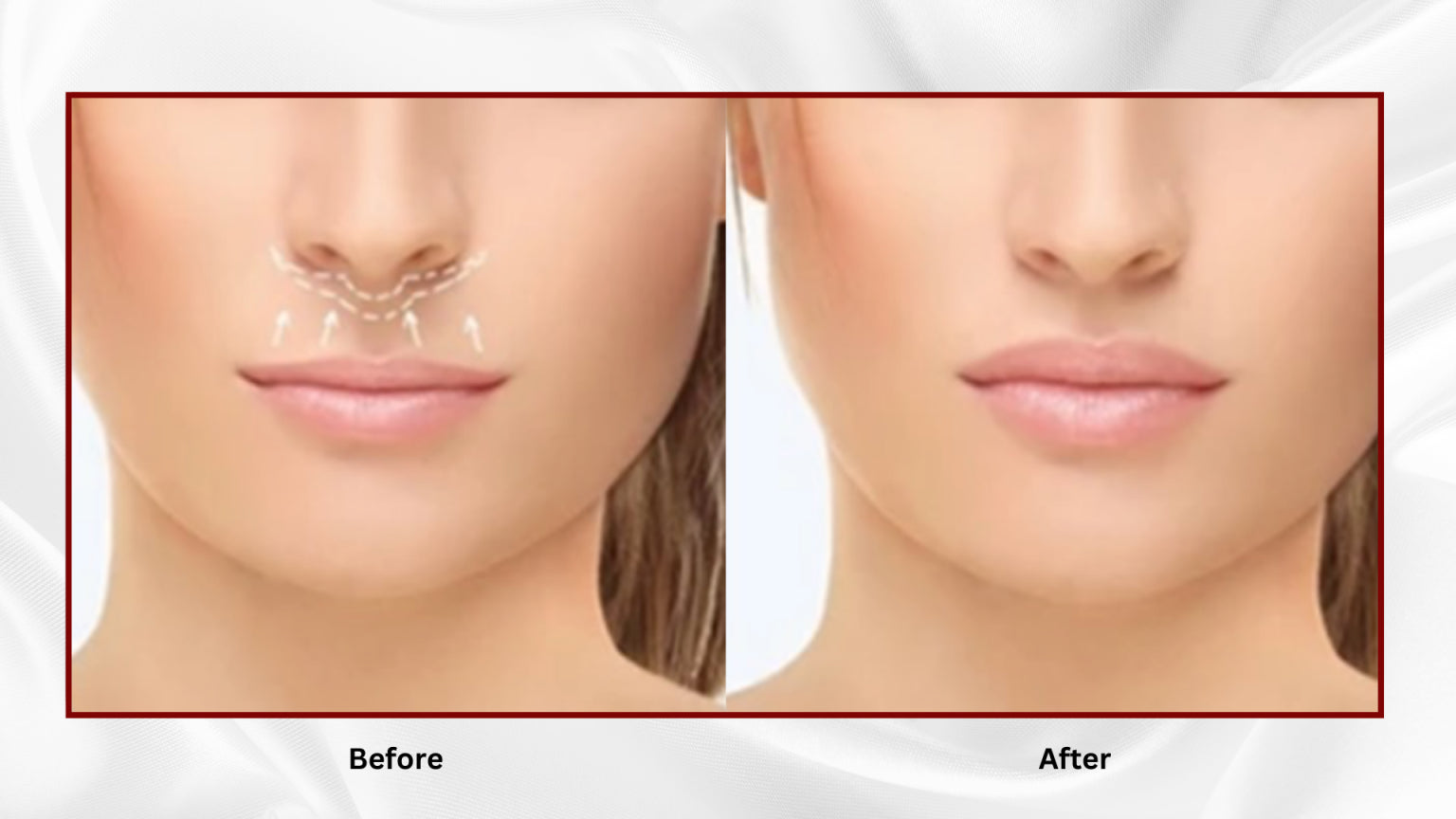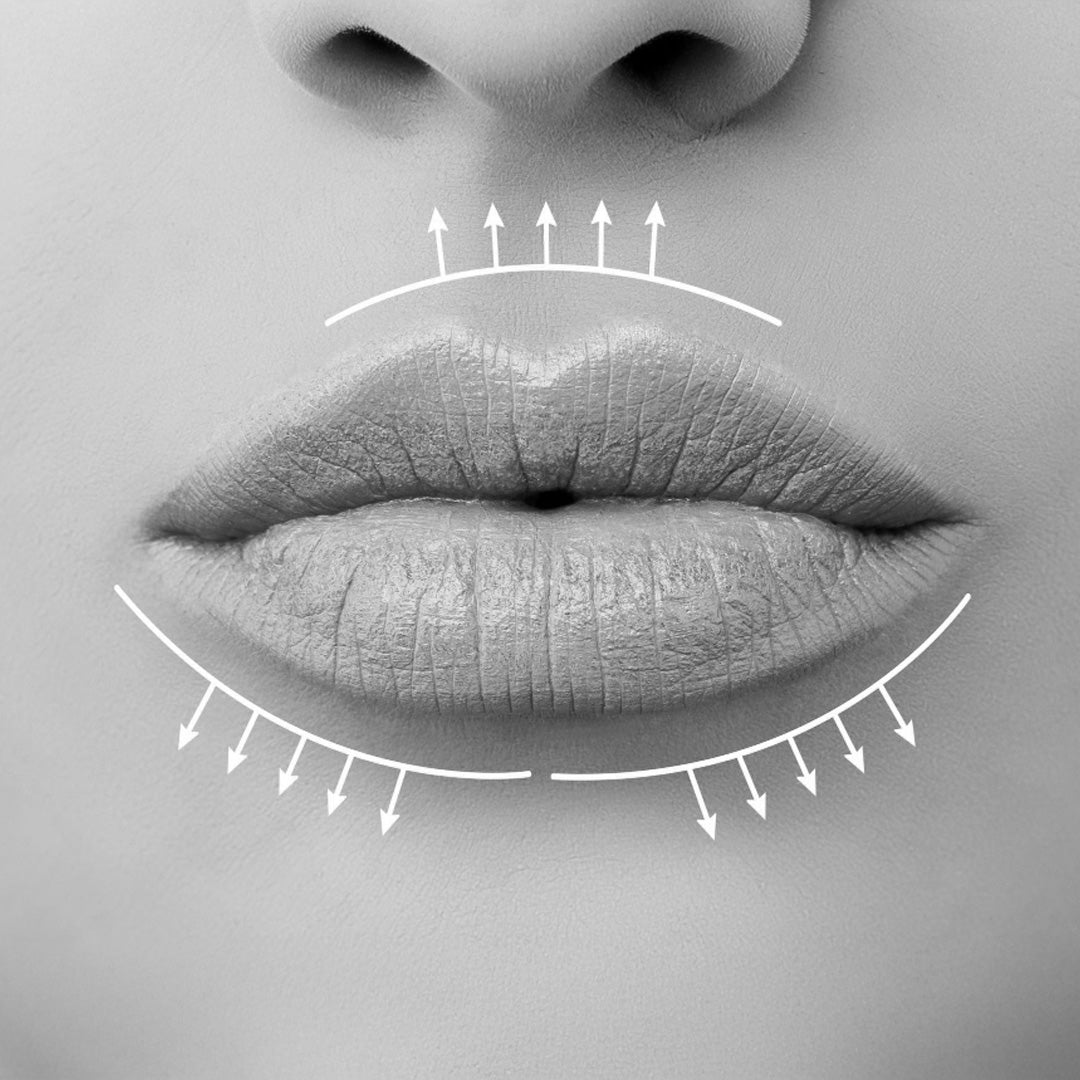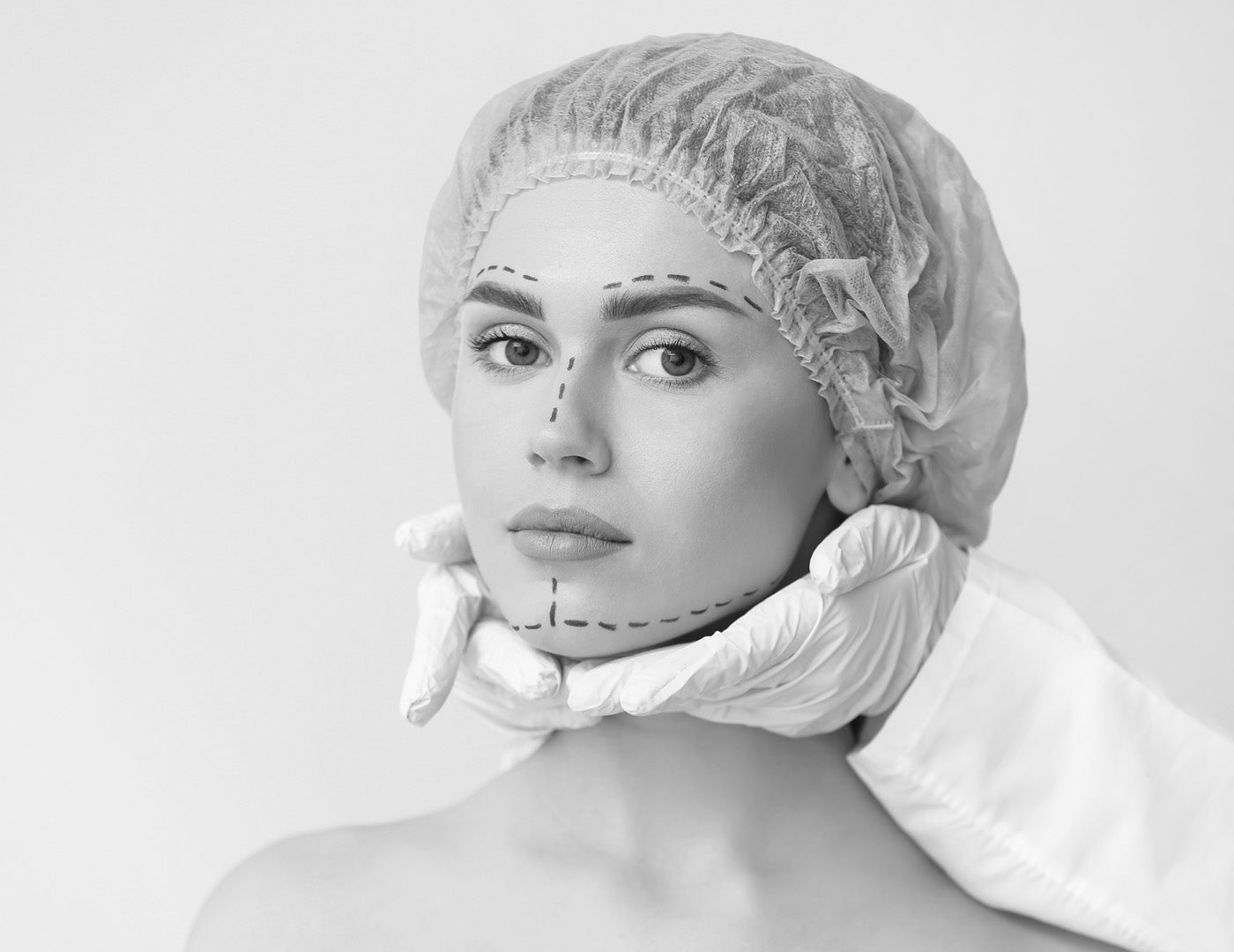Prof. Dr. Robert Hierner at a glance.
FAQs for Cosmetic Facial Surgery in Dubai and Muscat
Curious about face and neck treatments? We’ve compiled the top 10 most frequently asked questions to give you the insights you need. From understanding the best procedures for your skin type to recovery times and results, our expert answers cover it all. Explore the key facts and make informed decisions for your beauty journey today!
What is the best age to get facial surgery?
There is no “right” age for a facelift. It depends on your unique anatomy and genetics. Historically, the youngest candidates for facelifts have been in their late 40s, while others have not shown signs of enough skin laxity for a facelift until a decade or more later.
What age is too late for a facelift?
There really is no age cutoff for facial plastic surgery, but there are a few considerations that take priority as you get older. First, what are the problem areas that bother you the most, and what are your goals for improvement? Having a good understanding of the aging process can help guide these decisions.
What is a mini Face-lift?
A mini facelift generally targets the lower third of the face with the goal of tightening or removing excess skin around the chin, jawline, and neck (often referred to as “jowls”). As you get older, the lower-third area of your face can become prone to showing signs of aging.
How long do facelifts last?
A face-lift can give your face and neck a more youthful look. But face-lift results are not permanent. With age, the skin on the face may begin to droop again. In general, a face-lift can be expected to last 5 – 10 years.
What can you not do after facial surgery?
There can be some discomfort and soreness after gynecomastia surgery, but most patients can manage their pain with medication and rest. The level of pain may vary depending on the type of procedure performed and the patient’s pain tolerance
What position should I sleep in after facial surgery?
The best sleeping position after a facelift is on your back with your head elevated. This prevents strain on the incision sites and can help reduce swelling.
How to wash face after surgery?
You can have the first shower 24 to 48 hrs after surgery. Choose a mild, non-irritating cleanser. Avoid products that contain harsh ingredients or fragrances, as they can irritate the skin. Gently wash your face twice a day, using lukewarm water and a soft cloth or your fingertips.
How long does the bruising last after surgery?
Bruising is due to blood leaking from blood vessels, either during or after surgery. Mild to moderate post surgical bruising is inevitable and is rarely serious or cause of concern. A bruise will usually completely heal in 2 weeks.
What is the natural course of Bruising after surgery?
There are 4 stages of bruise colors:
A bruise first begins as a pinkish, red color, changes to dark blue or purple , fades to violet, green, dark yellow, and finally turns a pale yellow until it completely disappears.
How soon after facial surgery can I wear Make-up?
Make-up can be applied to hide bruising as soon as 48 hrs after surgery. It should be applied gently to the face.
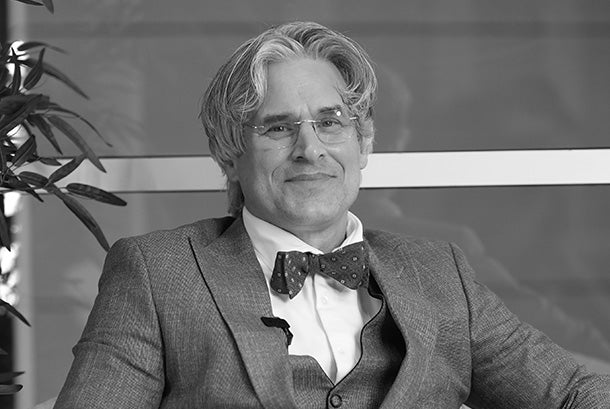

Ask the Expert: Face & Neck Treatments.
Discover the secrets to radiant, youthful skin with personalized guidance from our face and neck treatment expert. Ask the expert today and let us help you look and feel your best!
Face- Procedures
Liposuction for the midface Area
Accumulations of fat in the cheek area make the face appear round (moon face). Asian patients in particular tend to have a broad face shape due to a genetic disposition. They can negatively affect a person’s overall appearance, such that even a young, slim person looks obese or a fit person appears unhealthy.
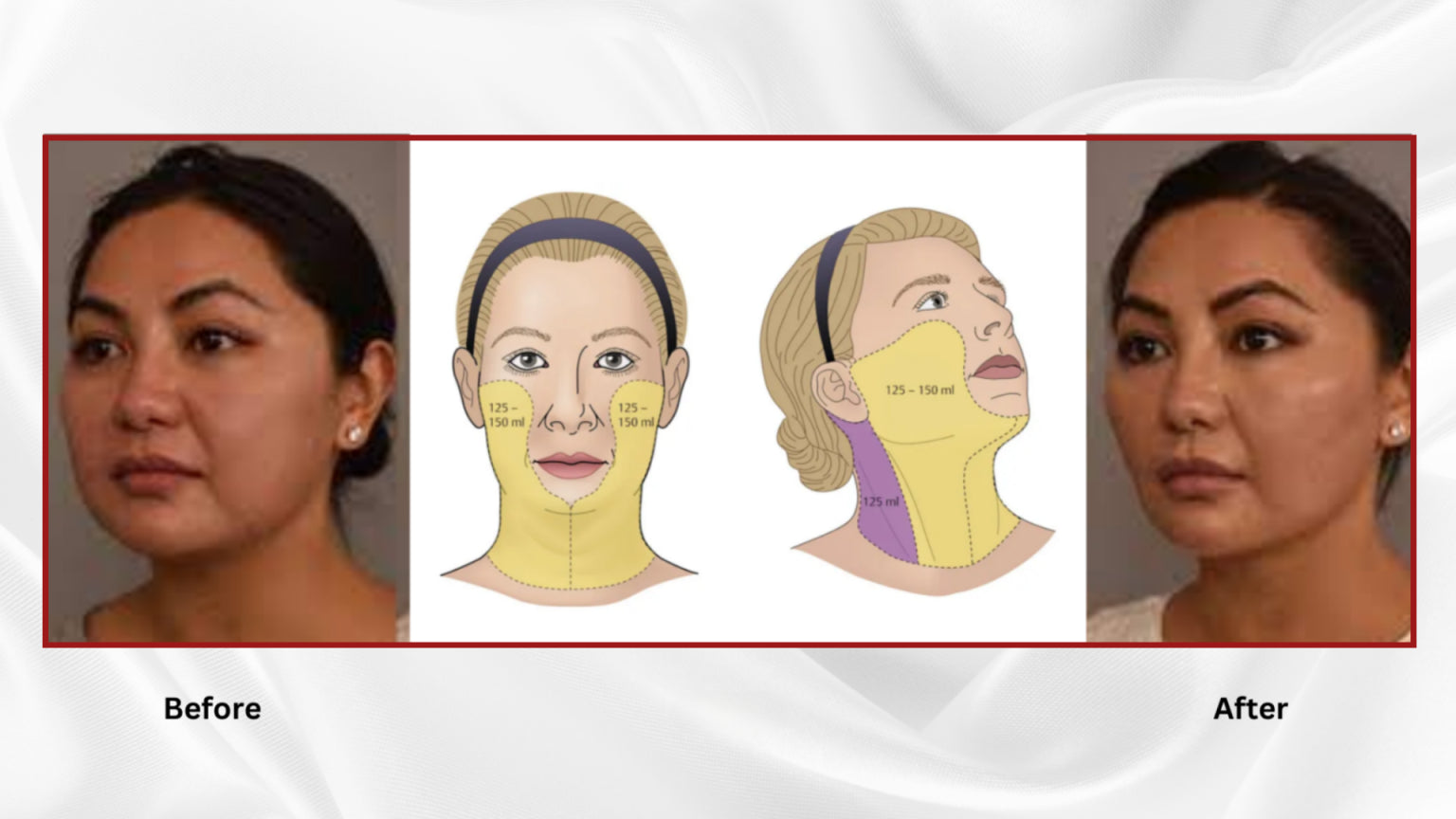
Fat Transfer
Fat Transfer to the face is mainly used for wrinkle therapy in the facial area. Fat transfer is the first-choice therapy for treating wrinkles in the facial area (micrografting). in patients with incipient volume loss in the face, such as:
- Dark circles under the eyes
- Deepened nasolabial fold
- Wrinkles in the cheek area
- Beginning marionette lines
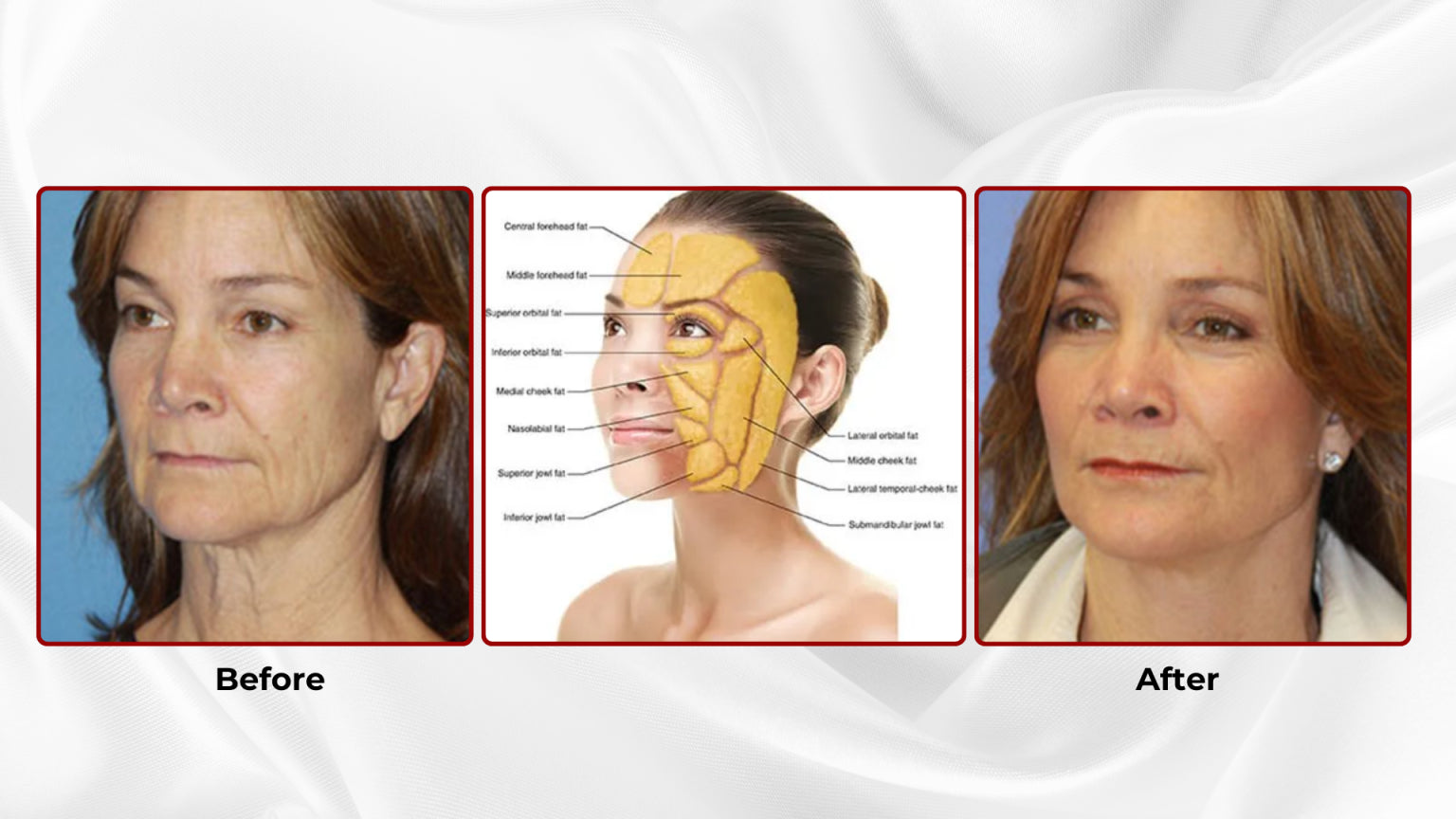
Resection of Buccal Fat Pad
The facial contour in a youthful face is smooth, uninterrupted and reflects light from the forehead, brow bones, bridge of the nose, cheek bones and chin. Having a round face naturally leads to a softer, less sculpted look. Buccal fat removal reshapes the face by removing all or some of the buccal fat pad in the lower cheek, depending on the deformity and the effect desired.
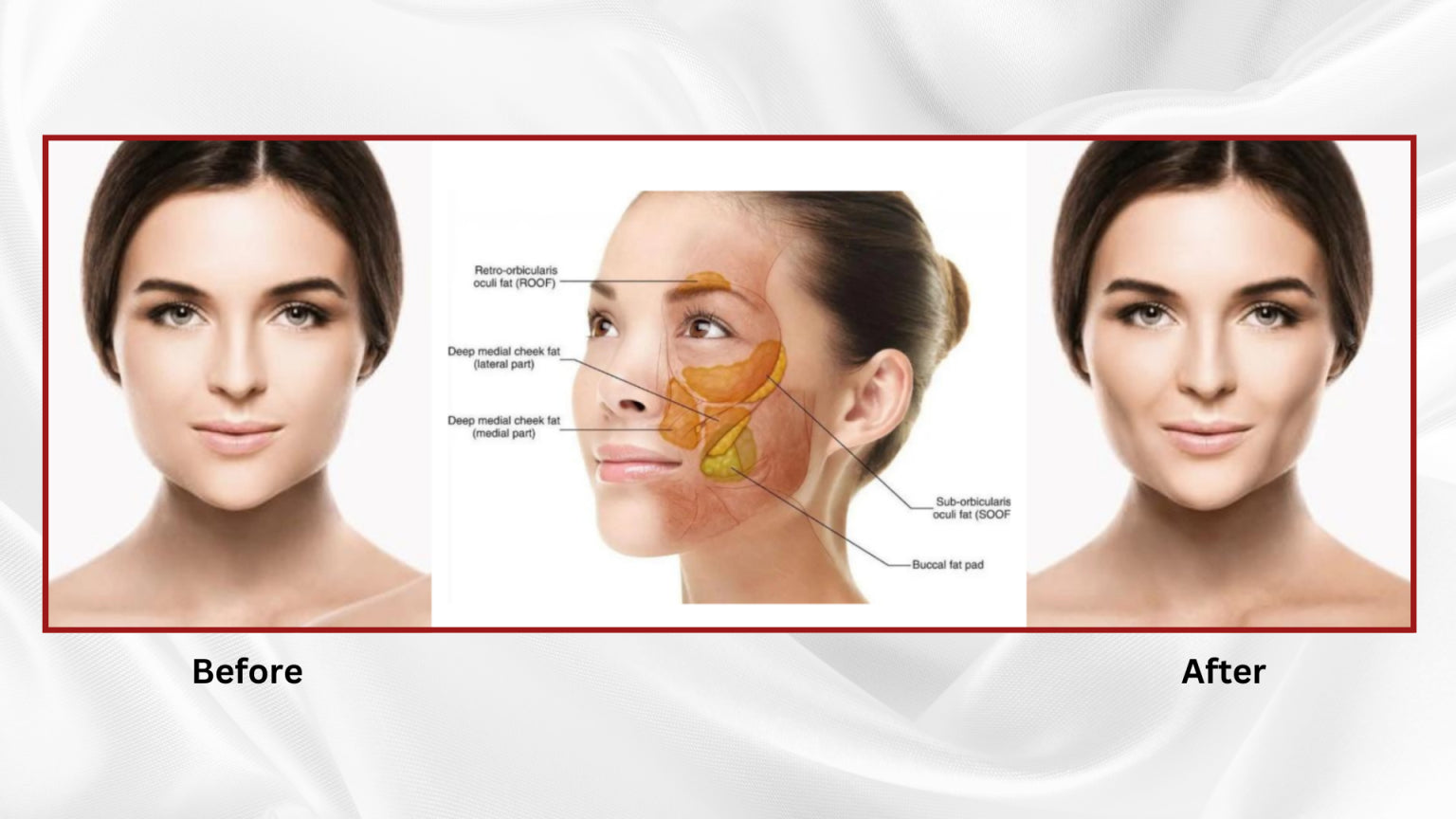
Forehead Lift
A forehead lift is a surgical procedure to correct sagging of the forehead skin, eyebrows, and upper eyelids. It may also improve the look of wrinkles in the forehead and between the eyes. Nowadays this is mainly done using endoscopic or minimal-invasive techniques. The Forehead Lift lasts about 3-5 years due to lifestyle and the natural aging process.
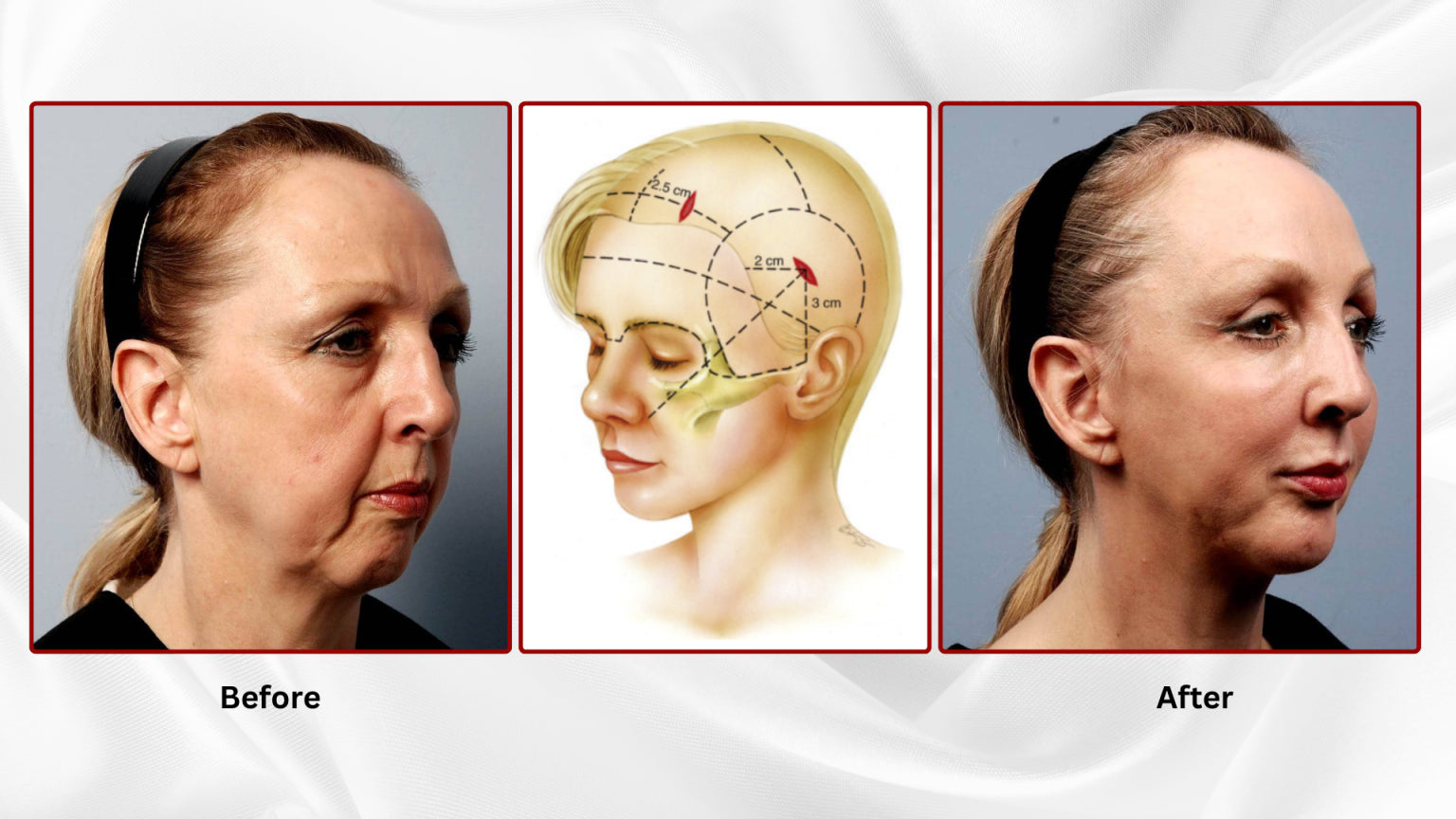
Midface (Malar Fad pad) Lift
The mid-face area refers to the part of the face below the eyelids and around the cheekbones, down to the upper lip. Very often this region is the first to show aging changes. A midface lift procedure involves restoring the position and prominence of a person’s cheekbones, as well as improving the continuum between the eyelid and cheek. This procedure can be done through the same incisions as used for a lower eyelid surgery.
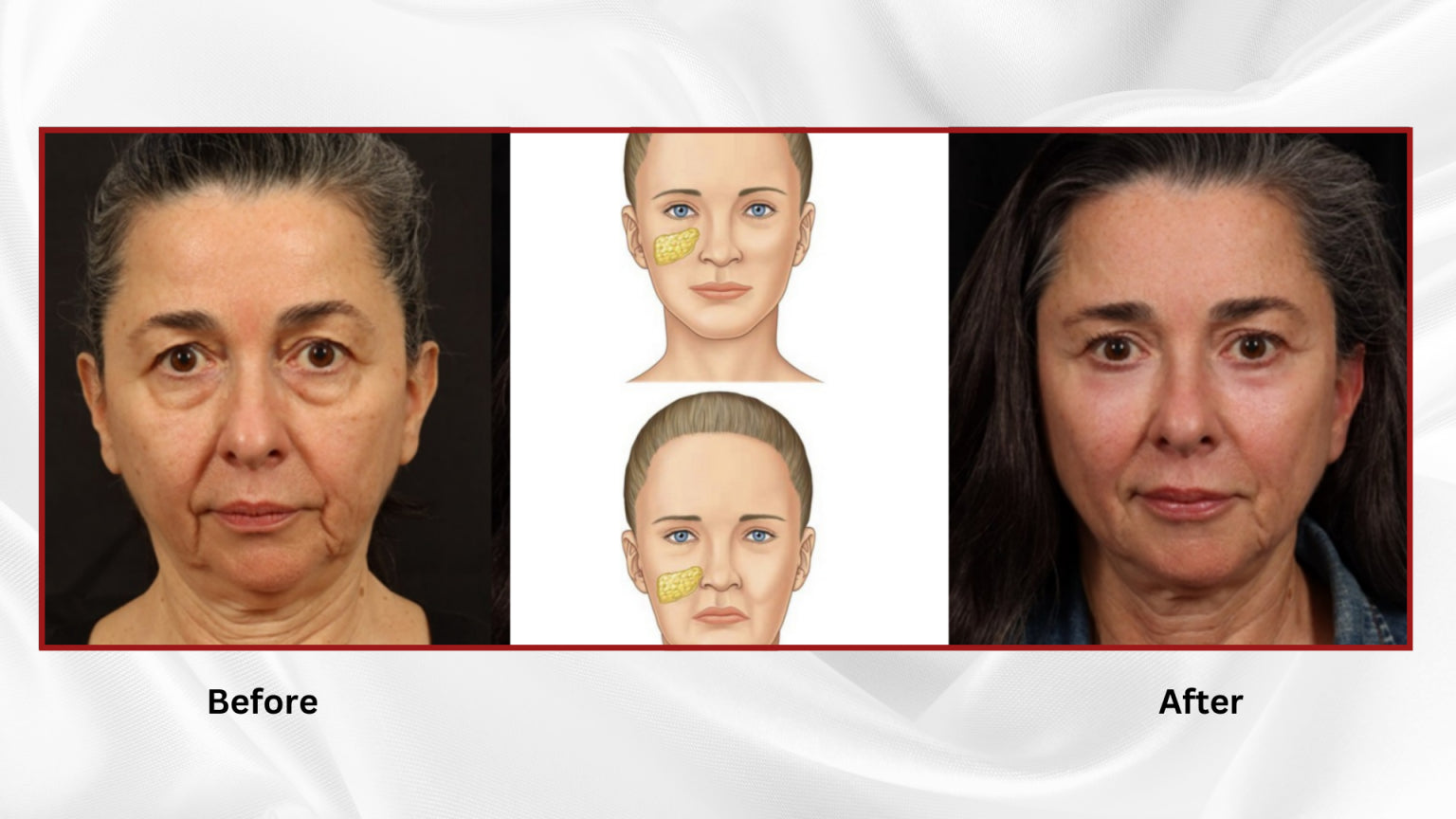
Mini (MACS) Facelift
A mini facelift is, as the name suggests, a smaller form of the classic facelift. The plastic surgeon removes the top layer of excess skin, usually limited to the cheek area. This procedure usually takes about 1-2 hours and is primarily suitable for younger patients who have not yet experienced increased tissue sagging and wrinkle formation. The mini facelift lasts about 3-4 years due to lifestyle and the natural aging process.

SMAS lift
With a SMAS (Superficial Muscular Aponeurotic System) lift, age-related changes in the lateral cheek area and neck area can be reliably tightened by pulling on the muscle-connective tissue layer on the face. The deeper the dissection below the SMAS (Deep plane lift) , the more extensive changes can be treated. The skin is then adapted without tension using a suture. The SMAS/Deep Plane facelift lasts about 5 – 10 years due to lifestyle and the natural aging process.
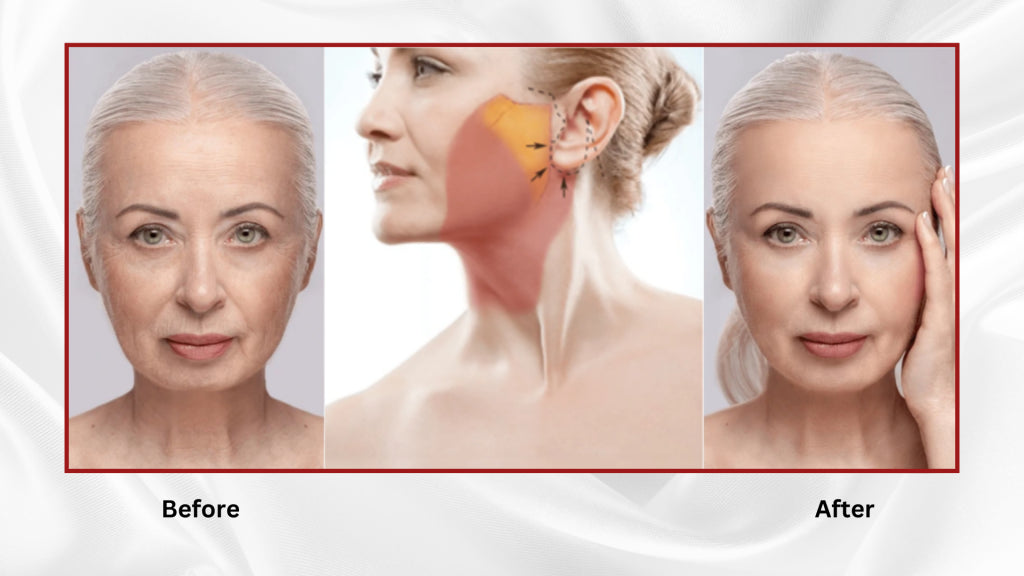
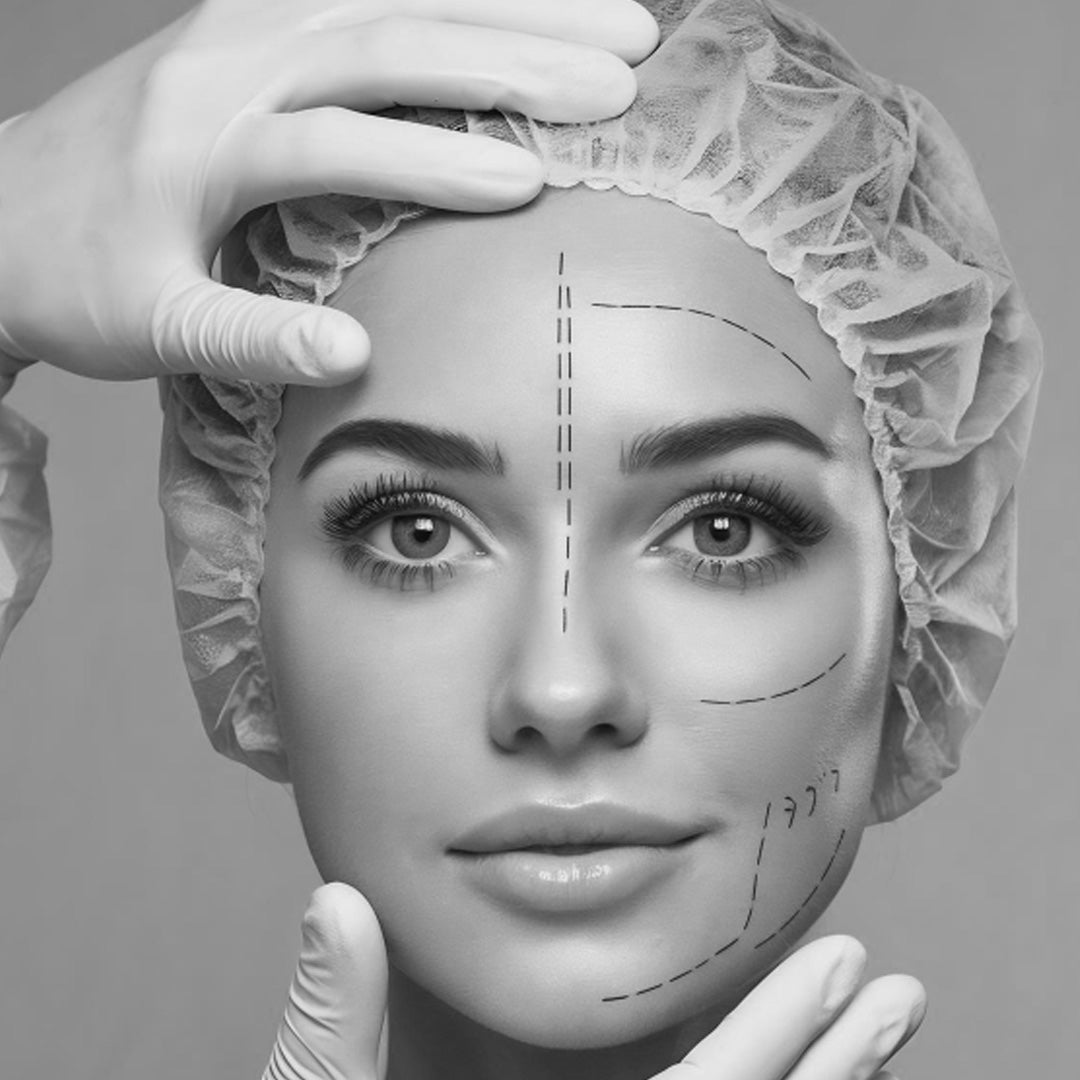

Neck - Procedures
“Double chin” Correction (Liposuction anterior Neck)
Fat accumulations on the neck appear as “double chins”. This can negatively affect a person’s overall appearance to the point that even a young person looks older or a fit person appears unhealthy. Depending on the extent of the deformity, Liposuction is performed under local anesthesia, if desired also combined with a light twilight sleep (analgosedation) or general anesthesia. After injecting the area that is to be suctioned out, the fat is removed with fine cannulas via punctiform skin incisions under the chin and behind the earlobes. A compression garment should be worn for 6 weeks after surgery over night.
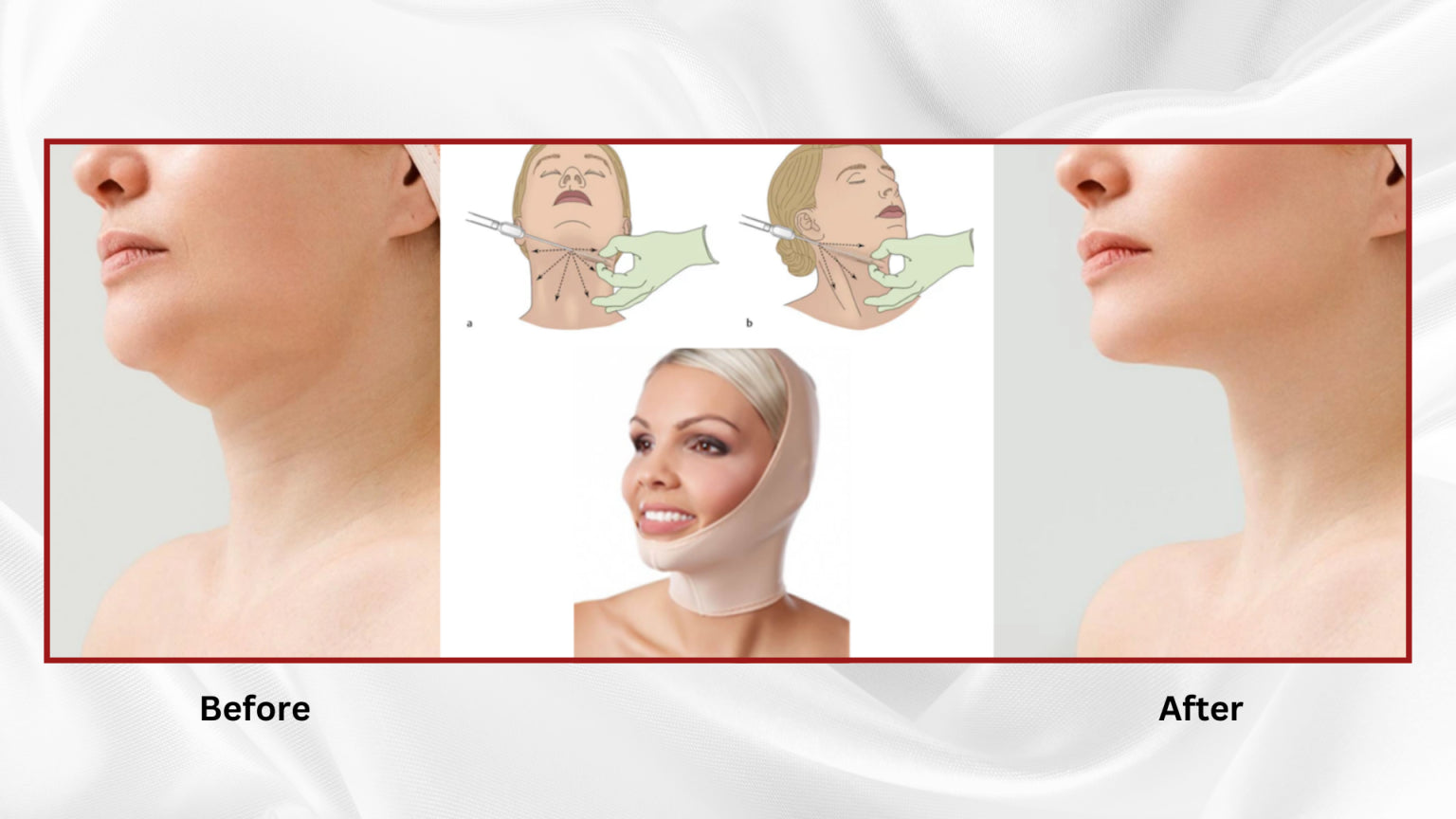
Neck Lift
Pending skin excess appears as a so-called “turkey neck-deformity”. This can negatively affect a person’s overall appearance to the point that even a young person looks older or a fit person appears unhealthy.
The neck-lift is the lower part of the SMAS/Deep Plan Lift. The classic incision is located behind the ear.
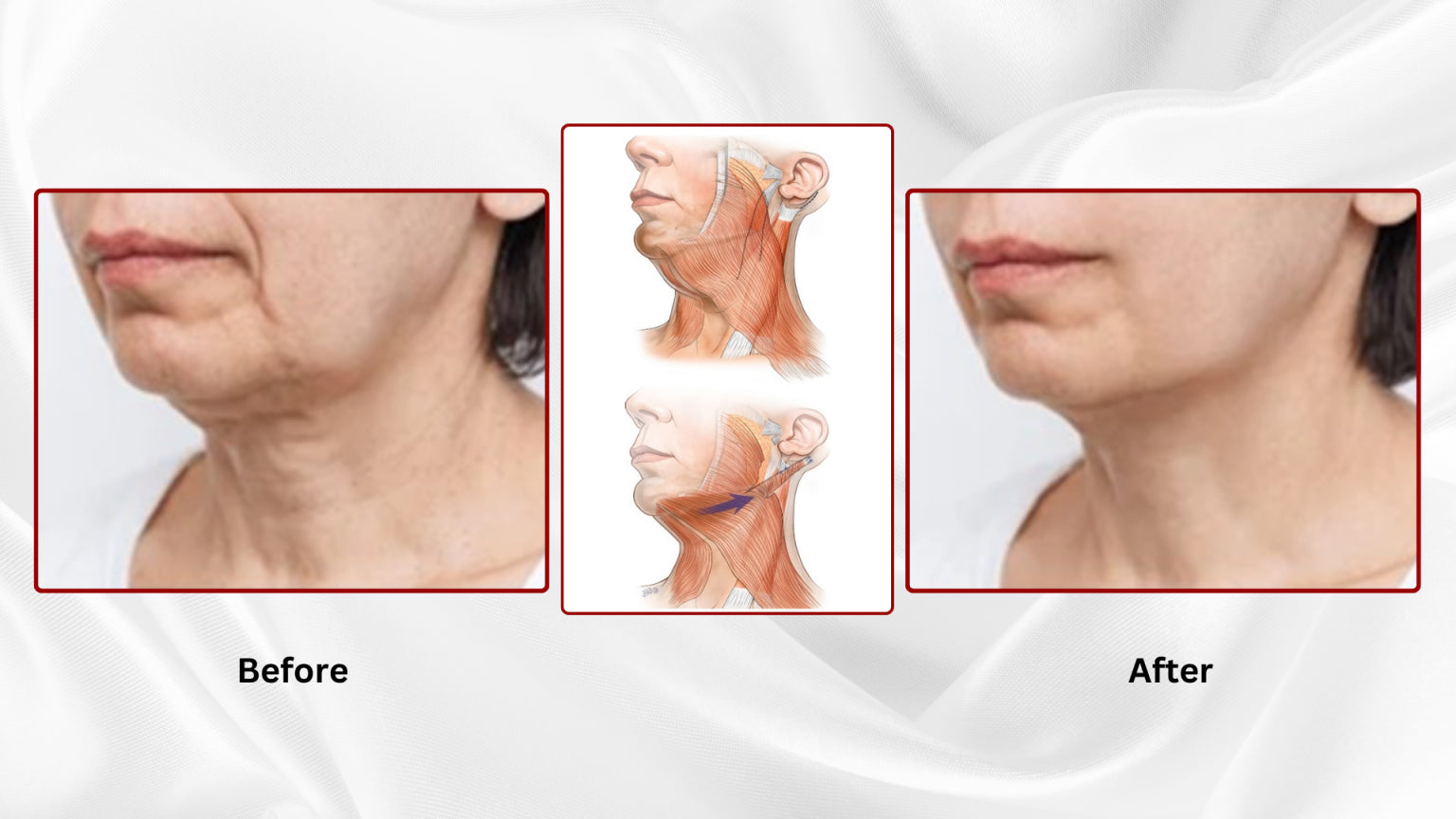
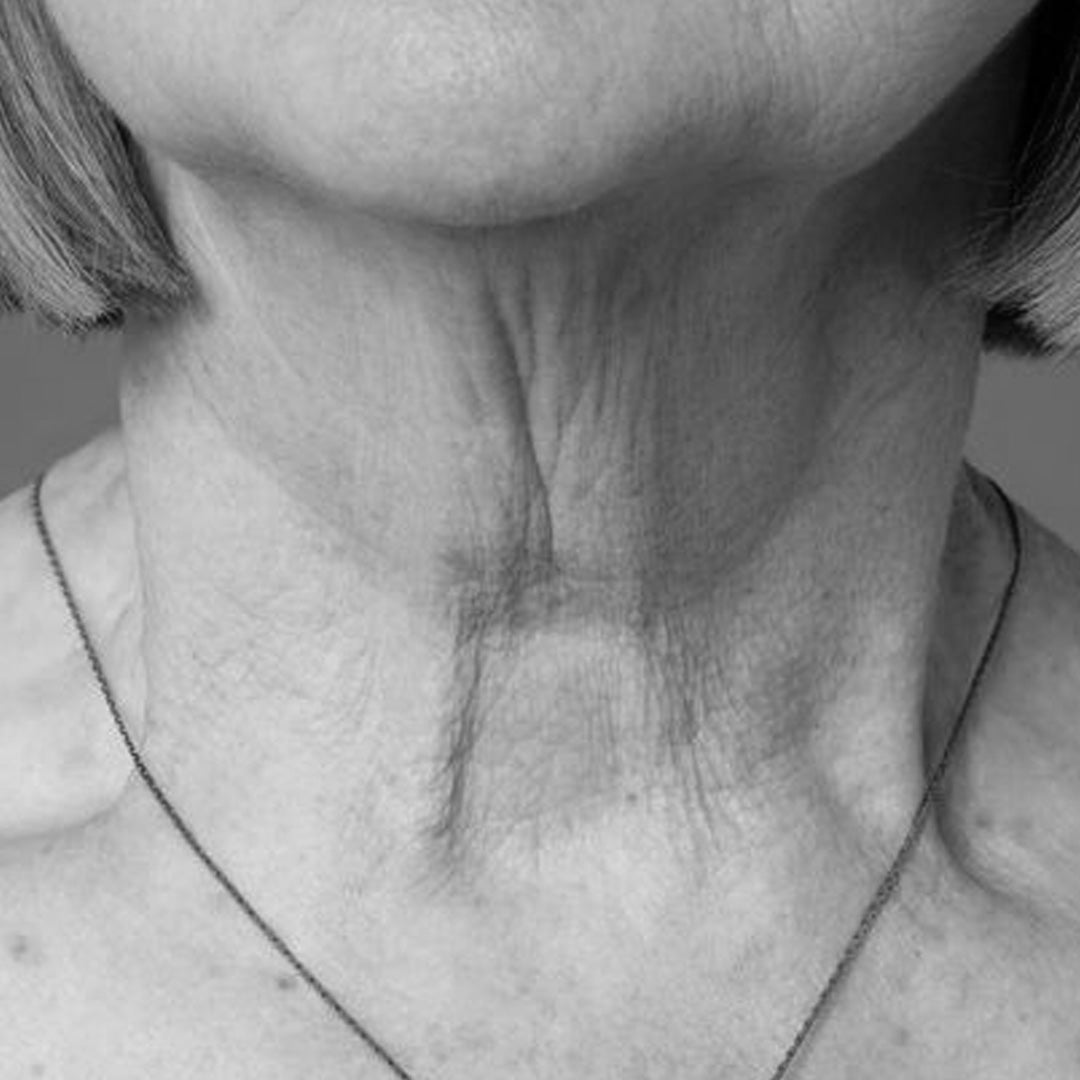

Eye - Procedures
Fat transfer for correction of dark circles under the eyes
Dark circles can be caused by multiple reasons, such as:
- skin discoloration
- sunken areas (volume deficit)
- shadows and skin excess
In case of missing volume and exposure of the orbital rim, fat transfer gives longer lasting results when compared to Hyaluronic acid filler.
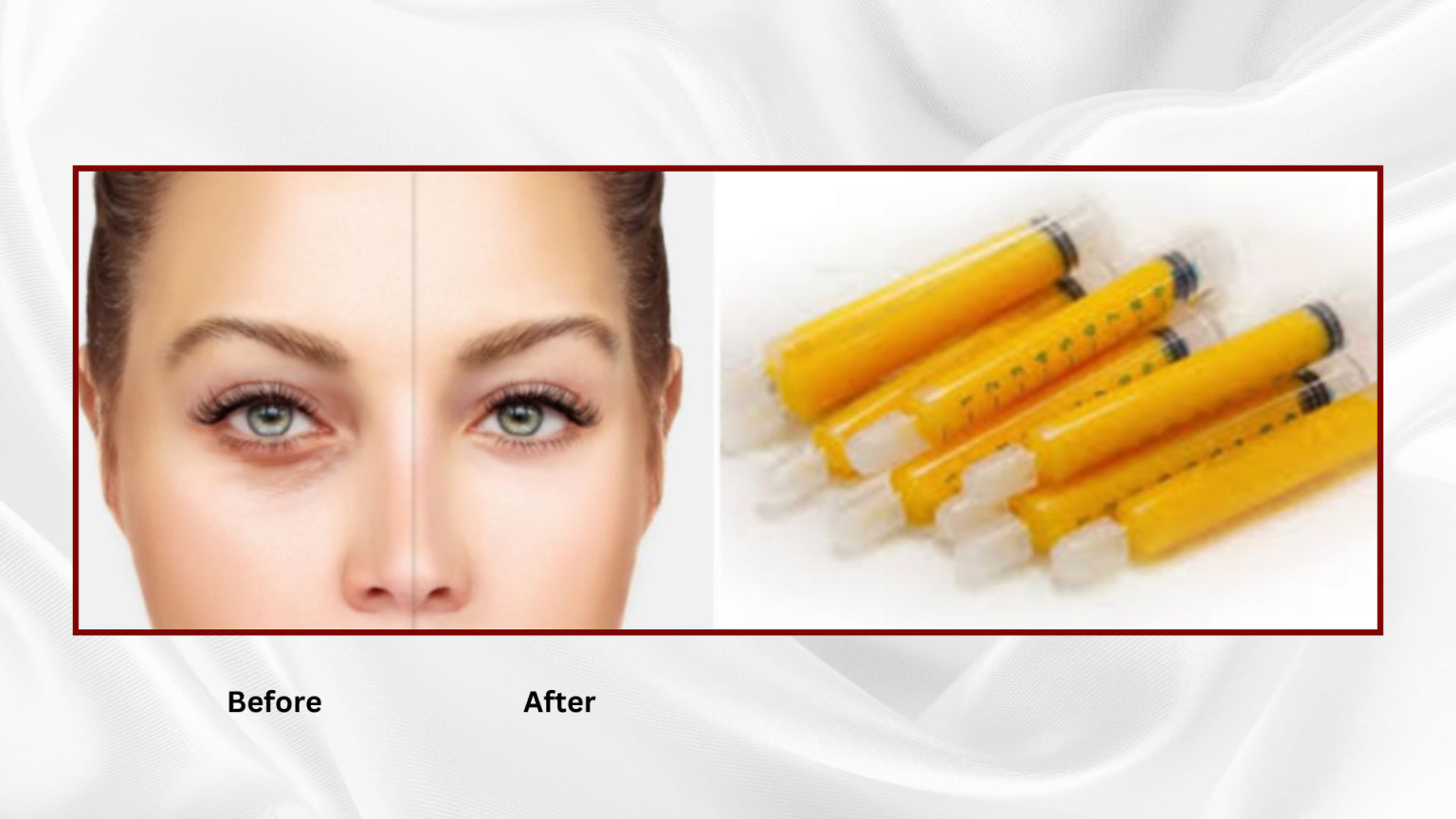
Direct Eyebrow Lift
A sagging forehead leads to a characteristic lowering of the eyebrows, especially in the outer area. The signs of aging are often particularly evident on the forehead and between the brows. Expression lines leave deep marks, lowered eyebrows press on the face and can make it look tired or grumpy.
The Botox Lift is a wonderful procedure to treat early stages of eyebrow sagging. If there is pronounced sagging (ptosis) and excess skin in the forehead/temples area, surgical correction is required. Surgical correction can be done by pulling of the forehead or direct eyebrow lift.
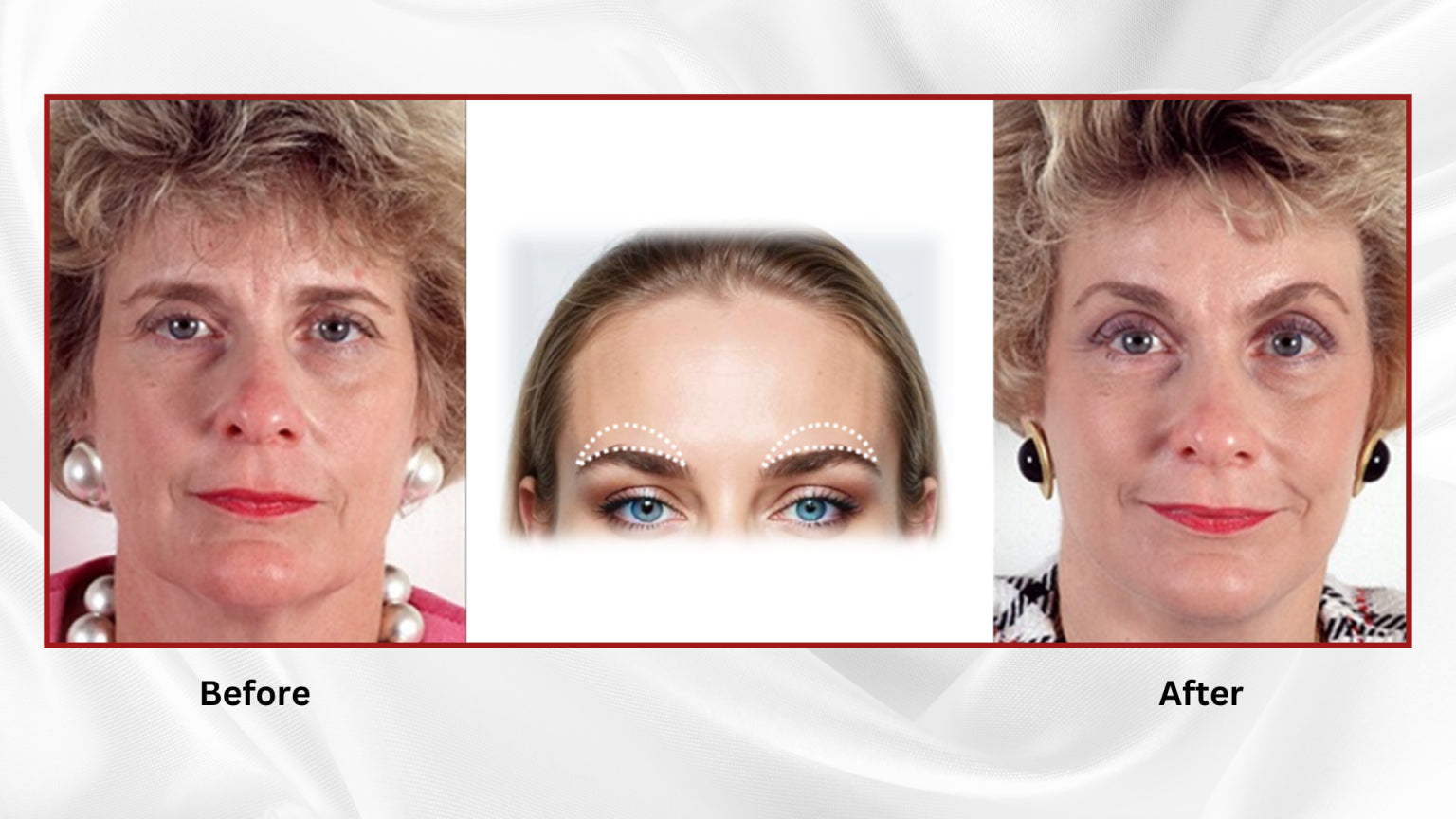
Upper Eyelid Lift (Blepharoplasty)
With age, the upper eyelid lengthens (“the curtain is coming down”). This lengthening leads to a reduction in the eye opening, the eye is perceived as smaller and pinched shut. The lengthening can be so pronounced that the vison is impaired. Extra skin and fat is removed from the upper eyelid to improve vision and Aesthetic. There is no noticeable scar as it is placed in an already existing skin fold. Skin resection at the upper eyelid can be done under local anesthesia.
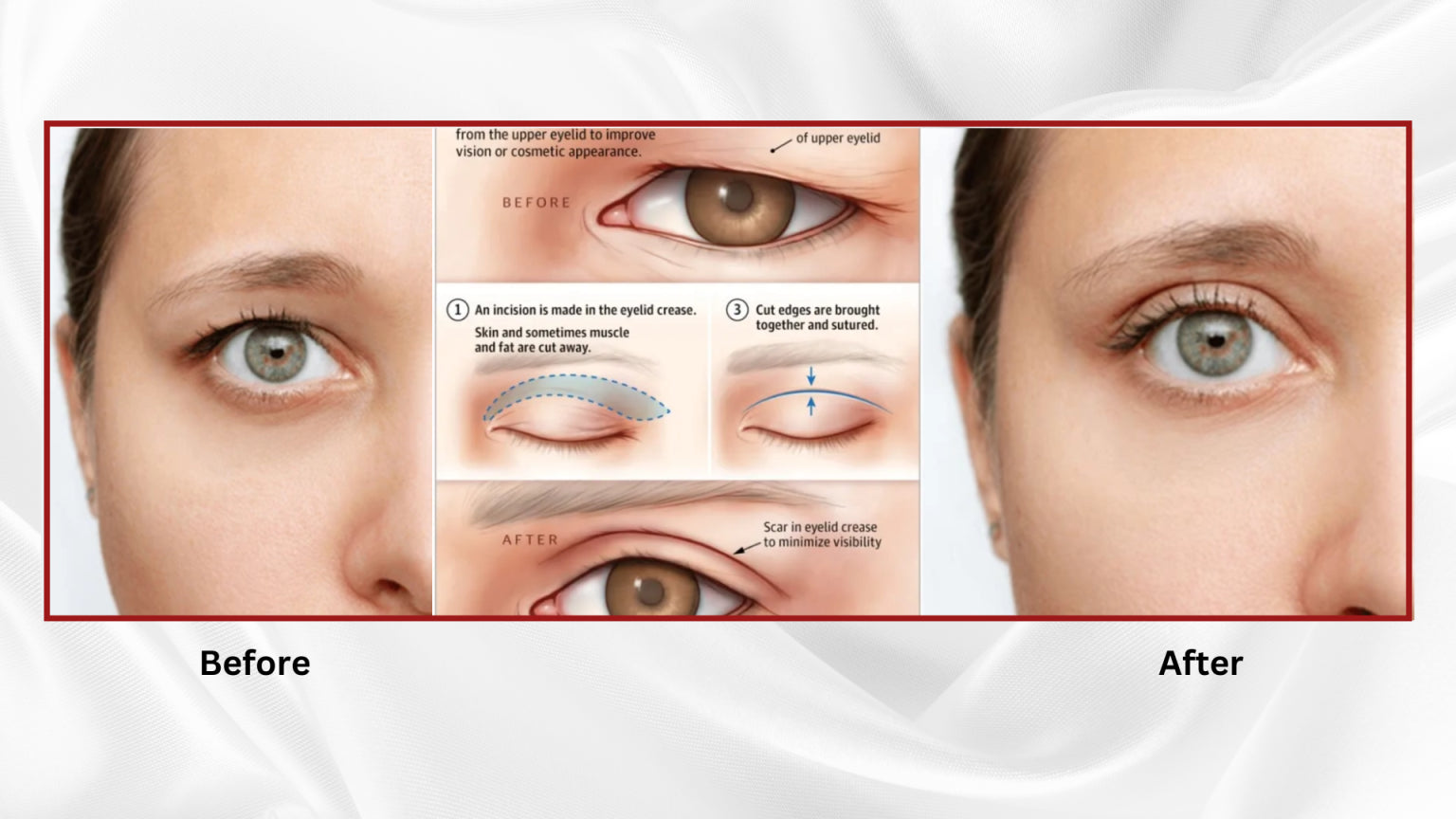
Lower Eyelid Lift (Blepharoplasty)
Changes at the lower eyelid lead to tied, sad or even sick looking expression. In the lower eyelid area, in addition to sagging skin and excess fatty tissue, color changes (“circles under the eyes”) must also be observed. At the lower Eyelid excess fat is removed or even used to fill the deficit lid/cheek junction. Care must be taken not to over resect excess skin.
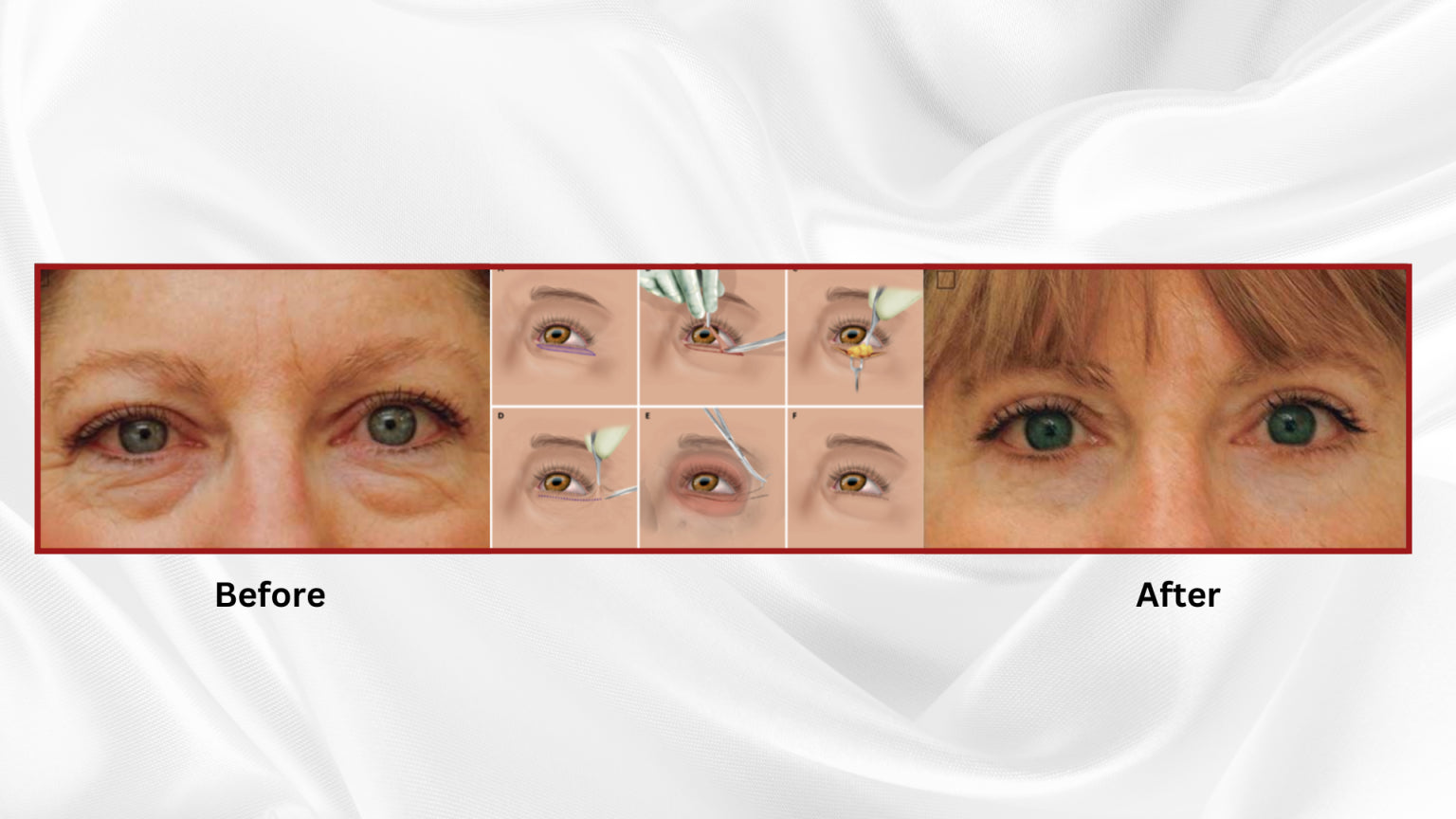
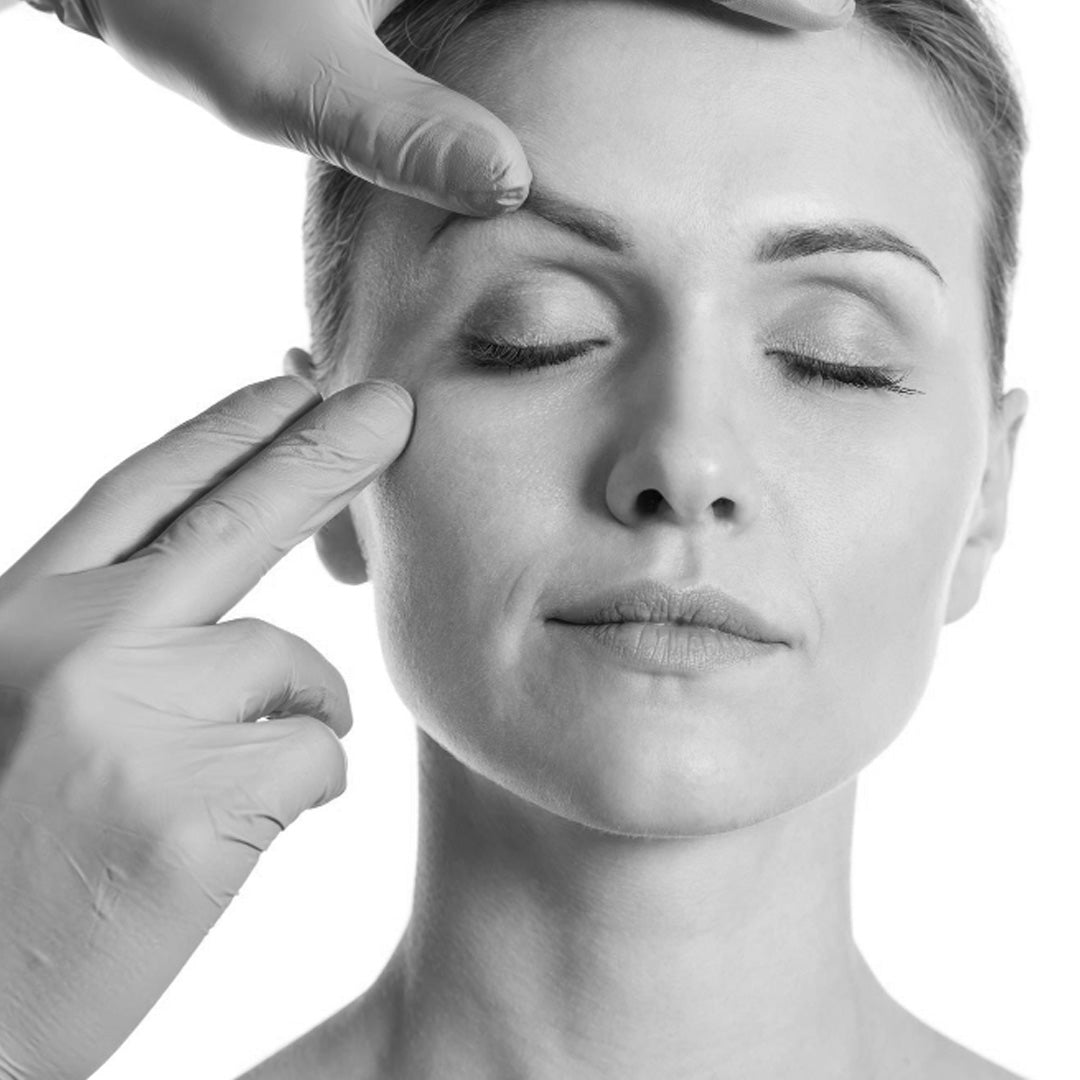

Ear - Procedures
Protruding Ears
Protruding ears are a particularly distinctive feature, which usually represents a great burden for those affected. Children and young people in particular suffer from teasing or hurtful comments from classmates. But adults also suffer from this beauty flaw.
Protruding ears can be put on easily and quickly as part of a correction of the protruding ears. We are using a cartilage-sparing surgical technique according to RAUNIG (2005), so that the risk of unnatural look after surgery is minimized. Depending on the ear deformity, ear correction procedure may include one or several steps:
(https://www.youtube.com/watch?v=pcyZs_MJLDY&ab_channel=NEWEARS%2FDrHermannRaunig)
Small effort, big change, high patient`s satisfaction (90 – 95%): Ear correction offers patient a reliable simple solution to permanently improve their overall appearance. In most of the patient there is a significant increase in self-esteem.
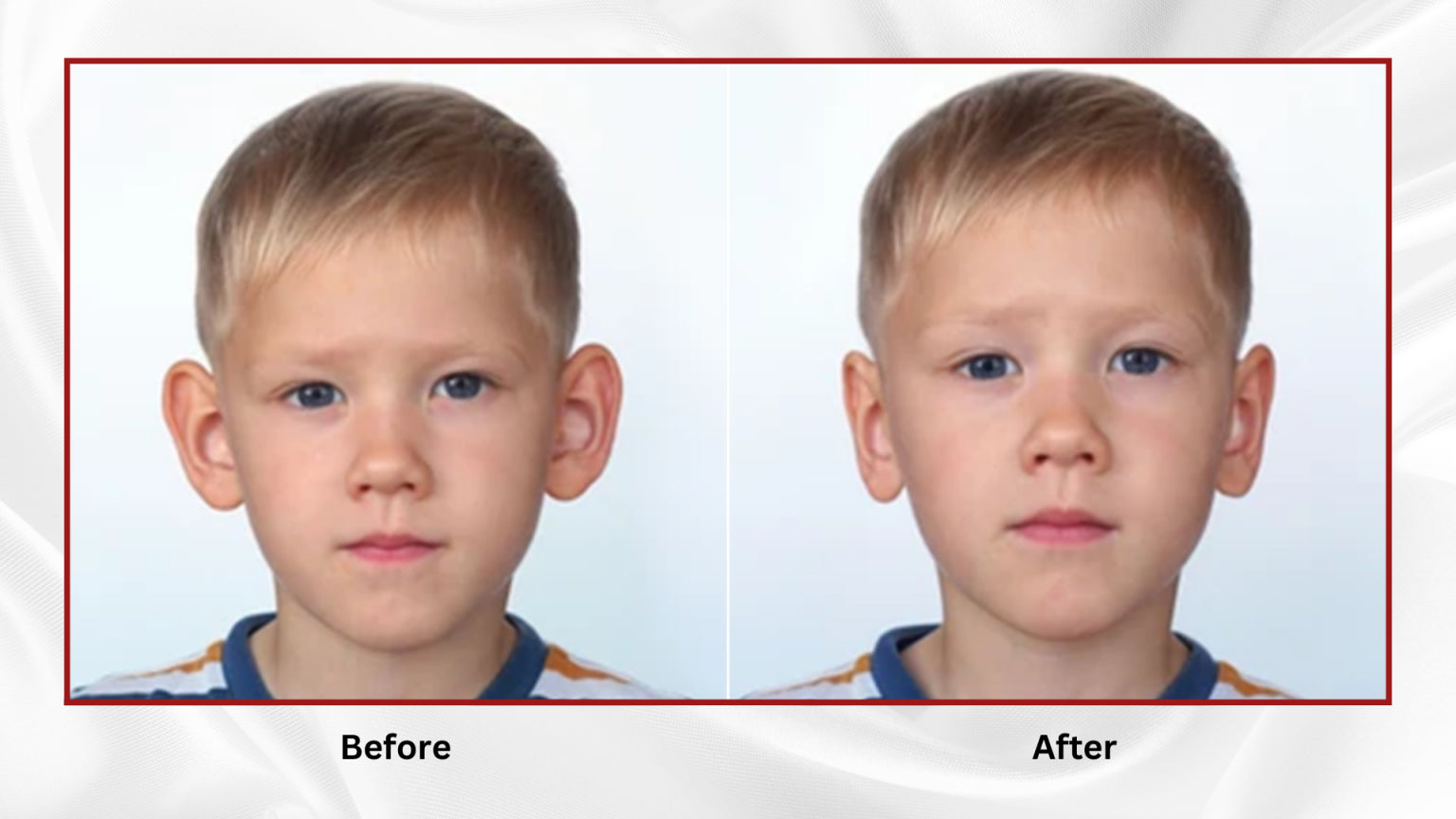
Torn earlobe
Wearing large earrings in particular often causes a split in the earlobe area, the so-called slit ear deformity. This can be either acute – caused by snagging on a large earring – or chronic – caused by the slow formation of a tensile crack above the earring caused by gravity. With the help of a simple operation, not only can the shape of the earlobe be restored, but it is also possible to wear (heavy) earrings again.
Both types of surgeries can be done under local anesthesia (children are done under general anesthesia).
Follow up is straight forward. Both patient groups should have postoperative scar suppression treatment using clip-on earrings with silicon inlays for 3 – 6 months. Provided the basic surgical principle of asepsis is adhered to, an excellent cosmetic result can be achieved.
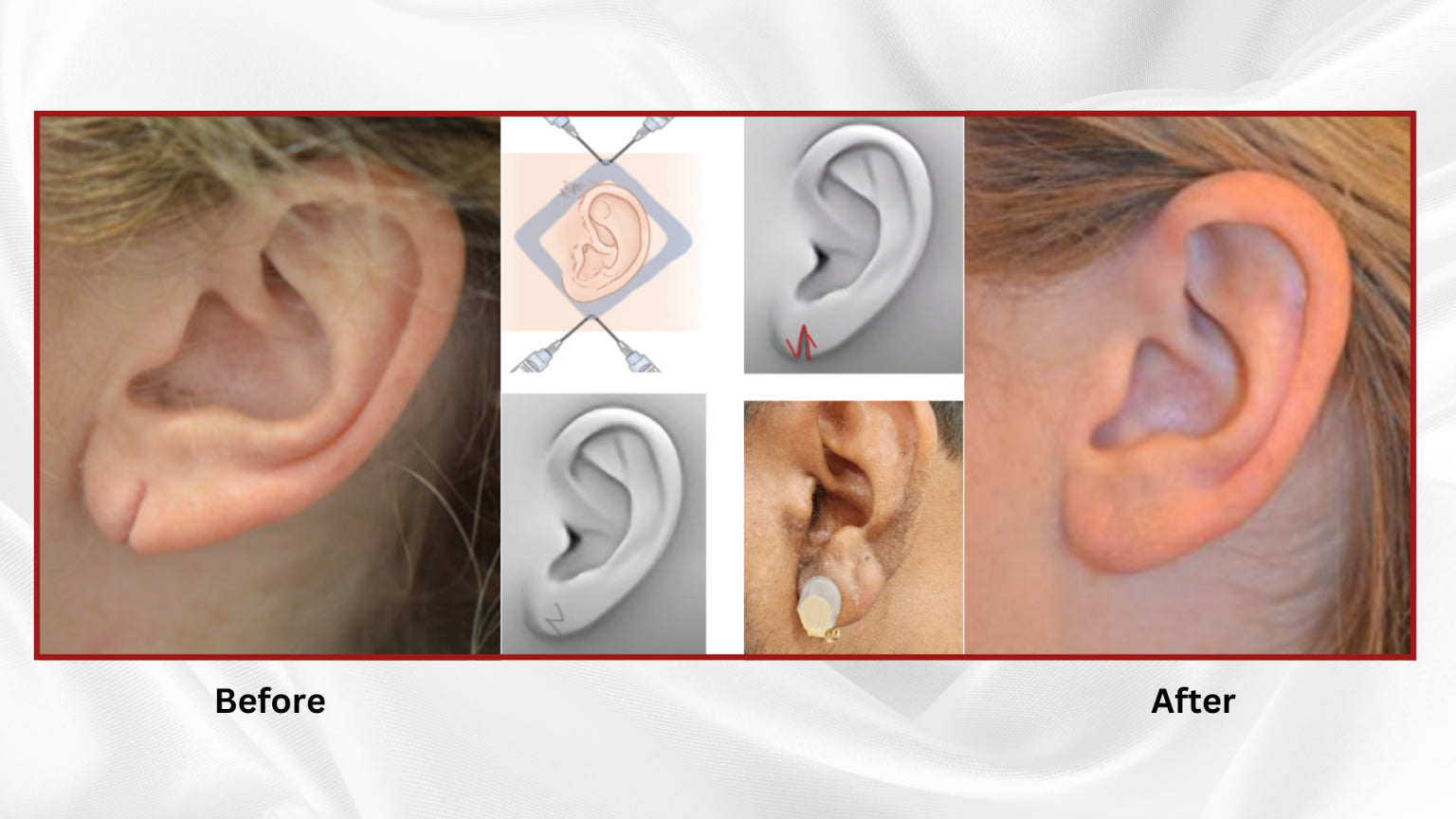
Keloid Scar
The back of the ear and the earlobe are one of the prime sites for Keloid scar (Scar Removal) . There are several procedures available for treating excessive scarring. Above all, the multimodal correction of the keloid in the ear area has proven itself. Combined Keloid Treatment based on surgery+ radiotherapy + scar suppression treatment offers a well-known and proven method of treatment.

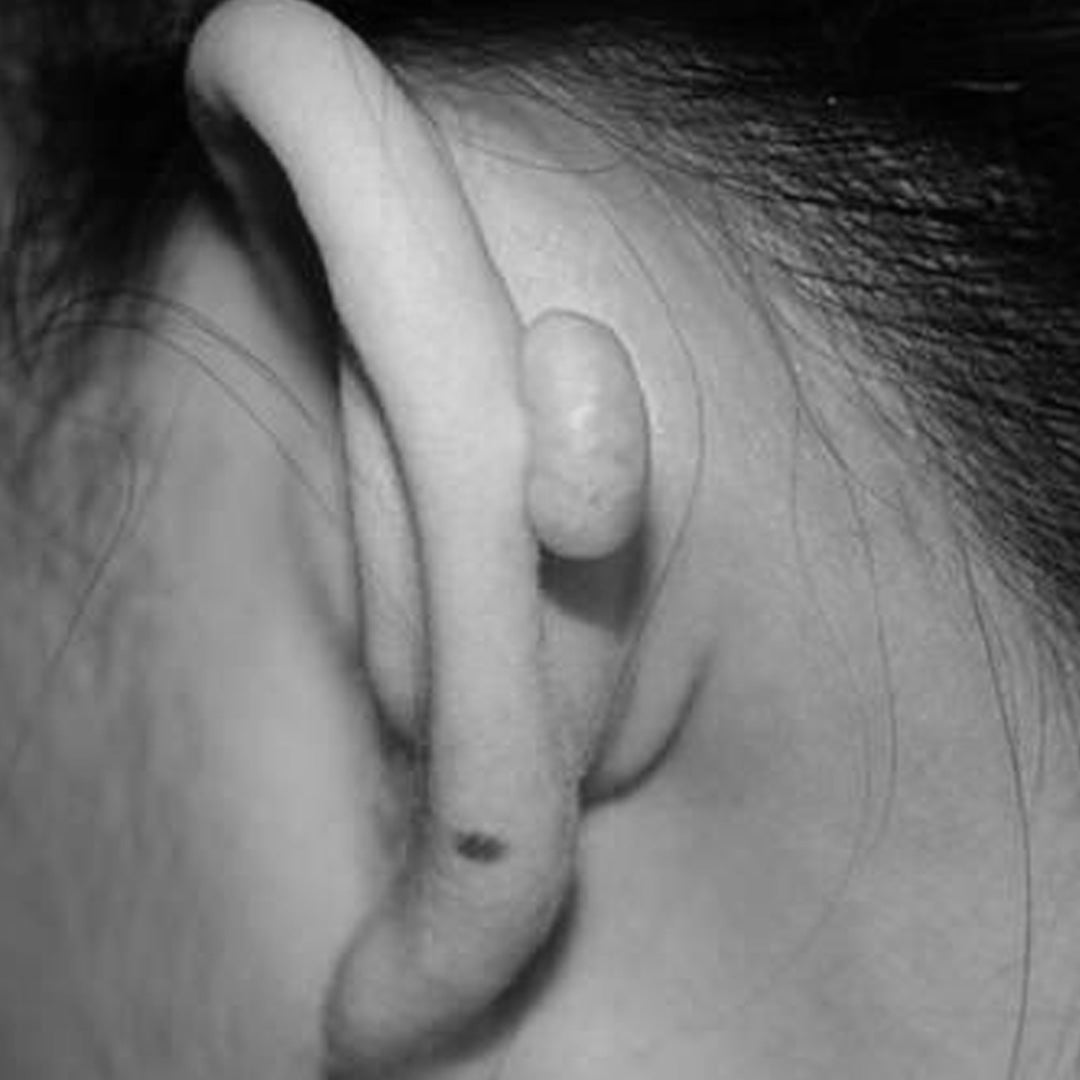

Lips & Mouth - Procedures
Fat transfer around the mouth
The mouth area as the central point of the face. It significantly contributes to the overall impression of a person. As part of facial aging, there are characteristic age-related changes in the mouth area:
Drooping corners of the mouth, thinned lips and deepened wrinkles around the mouth give the impression of dissatisfaction and/or sadness (“the sad facial expression”). There are several non-surgical and operative procedures available to correct age-related changes in the mouth, which can be used alone or in combination:
Fat transfer gives longer lasting results when compared to Hyaluronic acid filler.
NOTE: The region around the mouth is not significantly changes by any facelift procedure. Any volume loss must be replaced separately by any facelift procedure. Any volume loss must be replaced separately.
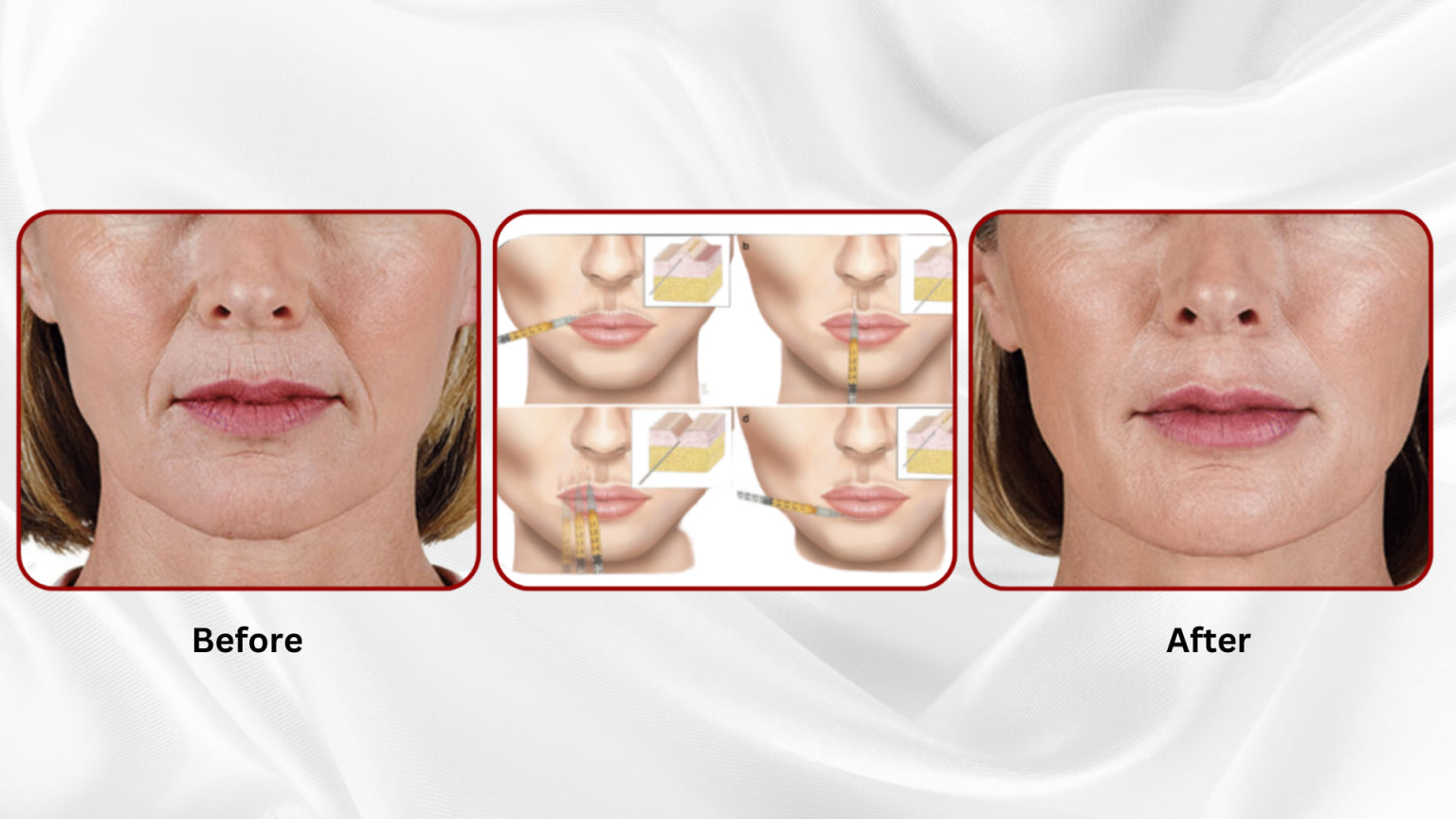
Lip enlargement by fat transfer
Beautifully shaped and full lips stand for sensuality and give the face – in women and men – a positive and harmonious charisma.
Lip augmentation is one of the most popular aesthetic procedures. Hyaluronic acid (→hyaluronic acid and other fillers for wrinkle treatment in the face and neck area) and autologous fat transfer (→autologous fat injection in the face area for wrinkle therapy) are particularly suitable for this purpose.
Fat transfer gives longer lasting results when compared to Hyaluronic acid filler.

Upper Lip (Bullhorn) Lift
Surgical lip shortening is carried out if the upper lip is too long and can no longer be improved by increasing the volume in the vermilion area. This technique can also be used to correct hanging corners of the mouth. In order to achieve a natural and above all balanced result, a combination with other interventions such as e.g. volume increase with hyaluronic acid or fat grafting make sense.
In local anesthesia, a small strip of skin is removed from under the nose in the shape of a bullhorn.
This leads to:
- A reduction in the distance between the nose and the upper lip
- Rolling out and thus enlarging the upper lip
- Slight mouth opening showing the front incisors
